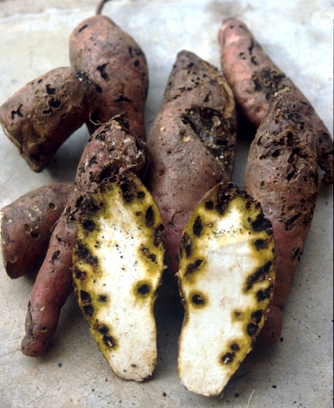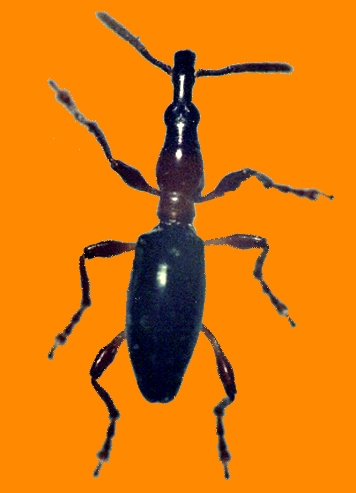|

Larval
tunnels and storage root flesh discolouration (N. Smit).

Adult Cylas puncticollis (N. Smit).
|
Diagnostic
summary
-
larvae feed and
tunnel into the vines and storage roots.
-
adult weevils
feed on the tender buds, leaves, stems and storage roots.
-
damage is characterized by small feeding and
ovipositional punctures on the
surface and larval
tunnels
filled with frass on the tissues.
-
larval feeding inside the vines causes malformation, thickening, drying
and cracking.
|
Taxonomy
Economic
importance
Geographical
distribution
Damage
Morphology
Biology
and ecology
Detection
and inspection
Management
References
View
full fact sheet
C.
formicarius fact sheet |

